#national us postage stamp day
Photo
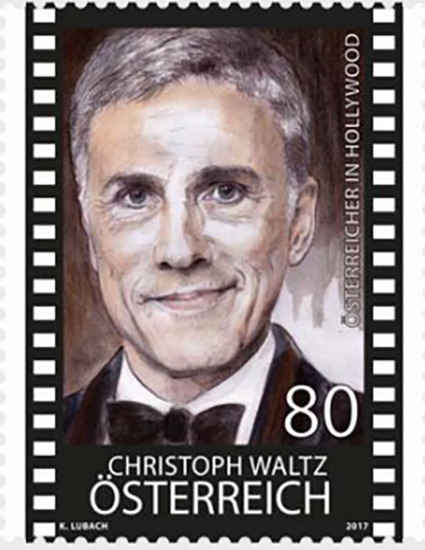
In Honor of National US Postage Stamp Day - July 1, 2022!!
(it might not be a US postage stamp, but there’s no way I would let this stamp go unrecognized today!)
21 notes
·
View notes
Text
07/01/2023 is Tartan Day 🌏, Canada Day 🍁🇨🇦, Republic Day 🇬🇭, National Doctors' Day 👩⚕️👨⚕️🇮🇳, World Bronchiectasis Day 🌏, International Reggae Day 🇯🇲, Keti Koti 🇳🇱, National Creative Ice Cream Flavors Day 🍨🇺🇲, National Gingersnap Day 🇺🇲, National Postal Worker Day 🇺🇲, National U.S. Postage Stamp Day 🇺🇲, National Hot Dog Month 🌭🇺🇲, Picnic Month 🇺🇲, Berry Month 🍓🇺🇲, National Ice Cream Month 🍨🇺🇲, Hop-a-Park Day 🇺🇲, International Chicken Wing Day 🐓🇬🇧, International Day of Cooperatives 🇺🇳

#tartan day#canada day#republic day#national doctors day#world bronchiectasis day#international reggae day#keti koti#national creative ice cream flavors day#national gingersnap day#national postal worker day#national us postage stamp day#national hot dog month#picnic month#berry month#national ice cream month#hop a park day#international chicken wing day#international day of cooperatives
1 note
·
View note
Photo

Happy National Us Postage Stamp Day!
0 notes
Text

You are invited to join Barricades: A Les Mis Convention in showing support for our 2024 charity partner Black and Pink by participating in their holiday letter-writing campaign. The goal of their campaign is simple: to send holiday love to all the incarcerated people who are members of Black and Pink! Let’s do our part!
When: Drop in with us on zoom on December 3rd between 1pm – 3pm EST (5pm – 7pm UTC) where we will go over the card writing guidelines and will write together. The zoom link will be available on our Barricades discord server on the day of the event.
Can’t make it to our event? You can still participate in Black and Pink’s Holiday Card Campaign by visiting https://www.blackandpink.org/.
What you’ll need: Because of restrictions on mail, all cards must be sent on plain white copy paper. If you have access to a printer, you can print the 2023 holiday card design in color or in black and white. You can participate no matter where you are in the world by simply using the address of Black & Pink headquarters as the return address. Just place your letter in an envelope with a postage stamp and drop it in the mail!
Why: The holiday season can be a difficult and isolating time for folks inside, especially for the Black & Pink National family, who might not have loved ones to connect with on the outside. Holiday cards help bring moments of joy, connection, and community, and send a clear message to correctional staff that people on the outside are watching out, and care for folks on the inside.
We hope you’ll join us in sending some holiday love and care to incarcerated LGBTQIA2S+ members across the United States.
#les mis#les miserables#barricadescon#barricades con#black and pink national#letter writing#prison abolition
74 notes
·
View notes
Text
How to get football autographs: a crash course
Fair warning: this will be a long post.
We’ve all heard it by now: the best way to get footballer autographs is to attend open trainings or wait outside their hotels and stadiums on match days. But what if you live far away or can’t afford to fly to training or games? Not to worry! Whether you’re a collector, a fan, or a little bit of both like me, quite a few clubs are still willing to send out autograph cards, as long as you send them a stamped addressed envelope.
You’ll find helpful how-to videos on how to do just that, along with links to some country stamp websites, below. These videos actually inspired this post:
youtube
youtube
Postal service links:
United Kingdom
https://shop.royalmail.com/postage-and-packaging/first-and-second-class-stamps - You can’t print UK stamps, but you can buy them off the Royal Mail website (see above link) or off Amazon in most cases
Germany
https://shop.deutschepost.de/shop/internetmarke/selectPostageIM.jsp?invalidAccess=true#porto-international (you’ll want to buy the printable compact letter—Kompaktbrief in German—stamps for 1,70€)
Spain
https://www.correos.es/es/en/companies/send/stamps - Unfortunately, I’m completely useless at navigating the Spanish postal service (AKA Correos), but here’s the link regardless. Maybe you’ll have better luck than me 😅
France
You can buy printable stamps using the link above
Postage Questions:
What materials will I need to send a request?
You’ll need a letter containing your autograph request, 2 envelopes (one bigger and one smaller), a stamp/stamps (depending on size and weight) from your country and the stamp/stamps of the destination country.
I’ve bought my stamps. What size envelopes should I get?
I recommend getting c4 envelopes, as they’ll be big enough to hold your autograph request letter. These will be the envelopes you’ll mail out. If you go with a c4 envelope, I’d recommend purchasing c5 envelopes as your smaller envelope. These will be the envelopes the clubs return to you with the autograph cards inside, and you’ll slide them into your c4 envelope when you’re ready to mail them.
Be sure to include the club’s mailing address and your country’s stamp on the large envelope and your address + their country’s stamp on the smaller one
Where can I find a club’s mailing address?
You can usually find a club’s mailing address, along with their attitude towards fanmail, on the “contact us” tab on their webpage. If you can’t find it there, search the name of the club on fanmail.biz; they have the mailing address of just about every football club you can imagine.
What should I put in my autograph request letter?
The main thing here is to include which footballers’ autographs you want (if you don’t have a preference, you don’t have to do this; you can always say you’d be happy to add whatever player cards they’re willing to send to your collection, or something like that lol). Apart from that, what you include is entirely up to you! I wouldn’t recommend sending a super long letter, but if you want to add a personal touch, you can always mention one of your favorite memories of that club and their achievements. It doesn’t hurt to throw in a thank you at the end either :) one last note: you can address your letter to the club or the player whose autograph you’re requesting; it’s entirely up to you!
Do I have to send a stamped addressed envelope to every club?
Not necessarily. If you want to save money on stamps and envelopes, try emailing the clubs first. If you’re lucky, they’ll send the autograph cards directly to you and pay for the postage :)
Now onto the most important question: does it work? The answer is that it depends on the club you’re sending the request to and sometimes even the league they play in. I’ll break it down by league below, detailing either my own experiences writing to the club (if I’ve written to the club and heard back, I’ll state it outright) or that of YouTubers who have reached out to them. If you don’t see your club here, assume they either don’t reply to fanmail, or I haven’t heard of any success stories yet.
Premier League
Some Prem clubs still send out autographs, but not all. Here’s the ones that do:
Manchester United - pre-covid I’m pretty sure they sent out only hand-signed autographs upon request. Unfortunately, they seem to have cut back a bit on this in recent years; nowadays they tend to send a mix of hand-signed and pre-printed, facsimile signatures (this was the case for me when I wrote to them a few months ago and a few YouTubers that wrote to them as well). Still, pretty amazing given the size of the club that they’re willing to do this. As a United fan, I can’t help but feel a little proud :)
Liverpool - they definitely take the “you’ll never walk alone” motto literally, because they also still answer autograph requests with squad photos and signatures, at least as of 2021. To add a personal touch, they usually include a certificate with your name on it. Even though they’re United’s biggest rivals, I can’t help but respect them for this.
Arsenal - another big club that’s not too big for their fans; to my knowledge, they still send out hand-signed autographs. In doing research for this post, I even stumbled upon a video of someone who got an Arsenal match program, 2 squad photos, and autographs on the back of one of them. Talk about a big haul!
Tottenham - usually send pre-signed, photocopied autograph cards
Chelsea - sent out pre-signed, facsimile autograph prints as of 2021
Manchester City - sends out facsimile signatures only, according to several YouTubers (I’ve never contacted the club personally, so I’m not sure if this is still the case). If you do reach out to them, let me know what you hear back!
Crystal Palace - hit-or-miss. They tend to reply with pre-signed squad photos. They usually include a “south london and proud” bracelet from what I understand though, which is a fun perk!
West Ham - you might hear back from them, you might not (I didn’t when I tried a few months ago, but I know several other people did). If they do reply, you’ll likely receive hand-signed photos.
Aston Villa - sent out mostly pre-signed cards as of 2021
Everton - sent out predominantly hand-signed cards as of 2020
Leicester - send out a mix of photocopied and hand-signed cards, as of 2020 - they generally include player cards from the entire squad
Bournemouth - sent out pre-printed cards as of 2021
Newcastle - still sent out hand-signed photographs as of 2020
Bundesliga
If you want hand-signed autographs, look no further than the Bundesliga. In my experience, they send out the most hand-signed cards of any football league, and it’s not even close. In fact, you’d be hard pressed to find a club that doesn’t send out hand-signed cards. I’m assuming it’s the same story for the 2. Bundesliga (I know Schalke sends out hand-signed cards at the very least).
Bayern Munich - generally, they prefer you purchase cards on their website. Unfortunately, you have to be a member to buy signed cards on there; otherwise, you have to settle for pre-signed prints. That said, I’m pretty sure that if you purchase the player cards on the website and send a few back to the club to be signed, they will return them with official autographs. I sent in a request for Manuel Neuer’s autograph earlier this year and enclosed his player card, and they sent it back hand-signed. I included my membership number in my request just in case, but I know they’ve sent hand-signed autographs to non-members in the past (i.e. the YouTuber mentioned towards the beginning of this post). If you do reach out to Bayern, let me know how it goes. My fingers are crossed for you regardless 🤞
Borussia Dortmund - probably the most reliable of the Bundesliga clubs when it comes to autograph requests. They now limit you to 4 footballers per request, so you’ll have to be selective. That said, they usually reply quickly and send out hand-signed autographs every time. I have yet to hear of anyone who hasn’t received something back when they sent an autograph request to BVB.
Bayer Leverkusen - when I requested autographs from them, they sent me some back. I requested 3 players’ autographs, along with Xabi Alonso’s, and received all 4 cards back hand-signed. Quite a few YouTubers have had success hearing from them as well. Even though they’re having a fantastic season, they clearly haven’t neglected their fanmail, which is cool to see :)
Eintracht Frankfurt - sends out hand-signed autograph cards, even as of this season (they sent hand-signed cards when I reached out to them two months ago). If they’re your club, you’re in luck.
VfB Stuttgart - hand-signed cards
RB Leipzig - hand-signed cards
FC Union Berlin - hand-signed cards (I haven’t heard back from them yet, but it’s only been a week and a half at this point)
SC Freiburg - hand-signed cards
Borussia Mönchengladbach - hand-signed cards (I just heard back from them a week ago, and I think I got a mix of hand-signed cards and pre-signed prints)
FC Augsburg - hand-signed cards
SV Werder Bremen - hand-signed cards
VfL Wolfsburg - hand-signed cards
VfL Bochum - hand-signed cards, sometimes of the entire team (I received 4 cards in response to my request)
TSG Hoffenheim - hand-signed cards, often of the entire team
FC Köln - hand-signed cards
FSV Mainz - hand-signed cards, often of majority of the squad
La Liga
If you’re a fan of a Spanish club, you might be a lot less lucky, sadly. Only one club still sends out hand-signed autographs to my knowledge, and only one other club sends anything back in response to fanmail.
Real Madrid - occasionally sends out posters with pre-printed, facsimile signatures.
Sevilla - this is the club to ask for hand-signed autographs. That said, you probably won’t get more than one or two. I’d recommend being specific about which player(s)’ autographs you want in order to avoid being disappointed.
Ligue 1
Maybe the French league is more your speed. It’s a mixed bag here; while few answer fanmail, the ones that do are more often than not the most generous of any football clubs on this list.
PSG - the Parisians do still respond to autograph requests, but pretty much exclusively send out facsimile signatures.
Olympique de Marseille - have sent out pre-signed cards of their entire team in the past, along with a poster
FC Metz - sent out a mix of hand-signed autographs and pre-signed prints as of 2021
LOSC Lille - sent out autograph cards as of 2021
OGC Nice - sent out autograph cards as of 2021
RC Strasbourg - sends out autographed postcards, and if you’re lucky, they might include a squad photo and some stickers along with it :)
AS Saint-Étienne - send out hand-signed cards, although I’ve also seen them send squad photos addressed to the recipient, along with 2 issues of their club’s magazine
Eredivisie
PSV Eindhoven - sometimes send out autograph cards with facsimile signatures (pre-prints)
Swiss Super League
FC Basel - sent out hand-signed cards as of 2021
BSC Young Boys - sent out hand-signed cards as of 2021
Austrian Football Bundesliga
SK Rapid Wien - sent out hand-signed cards as of 2021
LASK - hand-signed cards (as of 2021)
Scottish Premiership
Glasgow Rangers - occasionally sends pre-signed prints (at least, as of 2021)
Ekstraklasa
All clubs listed below have sent out hand-signed autograph cards in the past:
Śląsk Wrocław
Legia Warszawa
Lech Poznań
A-League
Western Sydney Wanderers - signed squad photo
MLS
Whether you’ve got a particular club in mind or you’re just a fan of one of the big stars (i.e. Messi), you’re probably in for disappointment. Autograph collecting isn’t super big in the U.S., and MLS treats autograph requests accordingly.
Seattle Sounders - one of the only two clubs in MLS that actually sends a response to autograph requests - one lucky collector was even able to get a hat signed by the entire squad! (see here)
NYCFC - sends out hand-signed autograph cards occasionally, usually only one or two
*side note: unfortunately, it seems like most people have only reached out to European clubs, (with the exception of the A-League and MLS), so I can’t speak to whether clubs on other continents fulfill autograph requests. If you reach out to any clubs in leagues not mentioned here, let me know and I’ll update the list :)
Lingering questions:
How long does it take to hear back from clubs?
In my experience as someone living in the UK, I’ve heard back from every club I reached out to within 2-3 weeks (closer to the 2 week mark in most cases). It depends on how far away you live from the club though. I heard back from Manchester United within a week of mailing my request, but they were the exception, not the rule.
Tldr: expect to hear back within a month (maybe a month and a half in extreme cases)
Do clubs answer autograph requests during the off-season?
In my experience, no. I tried this a few years back with no success.
Can I send a shirt to be signed by a player?
I wouldn’t recommend it, as you may not get it back. If you do, the club will probably just return it to you unsigned. You’re better off just requesting an autograph card imo.
Do national teams send autograph cards?
Some do! Last I’ve heard, the German national team still answers requests with authentic signatures and the Croatian national team has sent out signed cards previously as well. The Czech Republic sends out unsigned squad cards. Last but not least, the Dutch national team has sent out fan posters in the past.
Apart from David MC’s autograph series, here’s some of the other videos that helped form this list:
youtube
youtube
youtube
youtube
#Youtube#if you do reach out to any clubs (on this list or off it) let me know how it goes :)#I plan on updating this list based on what people hear#I wish you the best of luck and would love to hear your success stories 😁#football#premier league#bundesliga#la liga#ligue 1#eredivisie#swiss super league#austrian bundesliga#scottish premiership#ekstraklasa#a league#mls
26 notes
·
View notes
Text

Signed, sealed, and delivered to you on National U.S. Postage Stamp Day 📬
How much do you love #NationalMarineSanctuariesStamps?
56 notes
·
View notes
Text

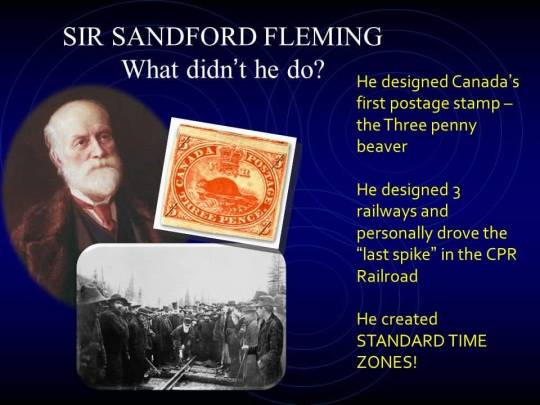
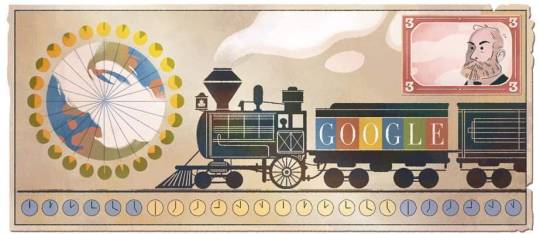
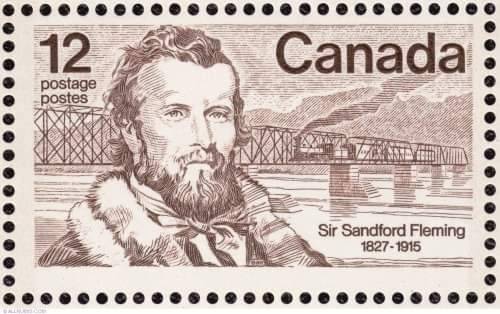
Sandford Fleming, an engineer and inventor responsible for a variety of innovations was born on 7th January 1827.
Another on of those relatively unknown Scots, but he has been honoured with a Google Doodle Sandfords best known invention was time!
Okay he never invented time, but he did give us the present system of time zones, which is still being followed all around the globe.
Fleming was born in Kirkcaldy and emigrated to Canada in 1845 at the age of 17. He first worked as a surveyor and later became a railway engineer for the Canadian Pacific Railway. He founded the Royal Canadian Institute in Toronto in 1849. While originally an organisation for engineers, surveyors, and architects, it would evolve into an institution for the advancement of science in general.
Sir Sandford Fleming advocated the adoption of a standard time or mean time, as well as hourly variations from that according to established time zones. Fleming’s system, still in use today, established Greenwich, England (at 0 degrees longitude) as the standard time, and divides the world into 24 time zones, each a fixed time from the mean time. Fleming was inspired to create the standard time system after he missed the train in Ireland due to confusion over the time of departure.
Fleming first recommended the standard to the Royal Canadian Institute in 1879, and he was instrumental in convening the 1884 International Prime Meridian Conference in Washington, at which the system of international standard time — still in use today — was adopted. Fleming was behind the adoption of the present time meridians in both Canada and the U.S.
Before Fleming’s time revolution, time of day was a local matter, and most cities and towns used some form of local solar time, maintained by some well-known clock (for example, on a church steeple or in a jewellers window).
Of course with most Scottish inventors and innovators Fleming was no “one trick pony” A few his other achievements were; He designed the first Canadian postage stamp, breaking with tradition, he suggested that it feature an animal, rather than a monarch. He chose the beaver: an animal that played a pivotal role in the development of Canada. The three-penny stamp issued in 1851 had a beaver on it (the national animal of Canada).Designed an early in-line skate in 1850. Sandford also surveyed for the first railroad route across Canada and was the head engineer for most of the Intercolonial Railway and the Canadian Pacific Railway.
12 notes
·
View notes
Text
It seems to me that the trouble with digital is it's all still physical objects. Maybe there can be copies of things and they can travel very fast and be in multiple places and be compressed down and stored in unthinkably tinier places and accessed cleverly and take forms we could barely conceive of before we met computers.
But it's still an SSD card, a big server, a powerplant, physical equipment to read a bunch of information inscribed into a very high tech substrate (stuff!)
Old film negatives or plates aren't nearly as useful until you use a bunch of old processes, materials and skills to pull prints from them. Even digitisation requires both image capture tools (objects) and software (runs on objects) to replicate a process that was originally made with objects, and which is therefore modelled on data from having those objects.
Lots of people say 'oh get rid of manuals and physical books and photo albums and go digital' and sure. Tactility aside it's great option for space. Fold your two hundred book library into a flash drive the size of a postage stamp like an old man folding the broadsheet down to a postcard. Saves on a lot of dusting and apartments are pretty small. (First person to use this as an excuse to pile on konmari is getting hit with a saucepan btw)
But putting it all in the digital space is treated like using a magic hammerspace where it's safe, retrievable and doesn't rely on the physical world at all. Just your passwords which are now tied to you specific phone, your accounts which run on servers which are just computers you don't own. Your evergreen file formats. Your hard drives which will not fail of course, and will always be backed up to other infallible hard drives and other people's computers and Google searches which definitely find that blog (dead) which had a link (dead) to a file on a Google drive (deleted) that one time. Electricity which will always be on and legacy software that will definitely still run on the new hardware because the old ones long gone, and WiFi which is a basic utility so will always be flowing and so so much water in the big server farms run by the monopolies bigger than nations.
It just seems. Like a grown-up, acceptable equivalent to stuffing a bunch of stuff under your bed so you don't have to think about it. Because even if you ignore the monopolies and the exploitation for water and minerals, and the planned obsolescence. Isn't it all still depending on stuff? Physical, very dense stuff. That needs to be kept dry and cool and powered on and connected and very Not Near big magnets? But it's still objects to look after.
It feels like when we're selling each other the idea of keeping everything 'digital' there's an undercurrent of 'because it loopholes having to think about the inherent ephemerality, storage requirements and maintenance needs of physical objects'. But just as computing can transcend the forms of the physical, so is it dependent on it. I'm worried what's happening given that as a broader culture we pretend that it removes thinking about objects, rather than adding a whole new bunch of objects to look after.
And at some point that file in that file format on that cloud server or storage device will be as inaccessible to you as an undeveloped glass plate negative is now. That day is coming sooner than we think. And pretending it's not still made of physical stuff is contributing to the narratives that let it get pushed here faster.
(Also my computer harddrive died last week. Pah.)
#talking freds#sorry i said flash drive im old. ehat do they even call them now. thumb drives?#sorry i said 200 book library I'm dyscalculic not saying ANYTHING in particular about your big or small library i dont even know which it i#better peiple than me have said this already#but im insomniac and i saw an article about glass negatives and got thinking#long post#my entire teenage music libary is on a semi corrupted ipod classic and jalf of it disappeared from the itunes Library at some point#i just. dont listen to lot of music now. i do listen. but not close. its not the same.
16 notes
·
View notes
Note
What do you think about Tamir Pardo and his recent words about apartheid?
I'm confused because according to pro-palestinian activists, apartheid is the fact that for Israelites and Palestinians the Israeli justice system has a different approach, so two legal systems. According to pro-israelis, there is no apartheid, because both Arabs and Jews live together and shame same public spaces. So it seems like both sides are using different definitions of what apartheid is.
Former Mossad director Tamir Pardo - who served in the Sayeret Metkal under Yonatan Netanyahu - said in September that he believes Israel is enforcing an apartheid system in the West Bank. High-ranking Israeli officials have been warning for years that such a thing could happen. Pardo is probably the most important to say that, by his estimation, they are there now.
Pardo didn't say that a mere four months earlier, in May, when he co-wrote this op-ed that I agree with down to the letter.
What changed in the administration of the West Bank in those four months? Nothing.
My perspective on the "apartheid" term is written in more detail here - and please read through the comments because it is fair to include viewpoints from an actual Israeli like @kwippo. Pro-Palestinians as a rule consider every inch of Israel to be "apartheid," that it is "apartheid" to have Yom Kippur be a bank holiday or for postage stamps to have a menorah on them. That is to be dismissed out of hand. I would not hesitate to stack 1949-armistice-line Israel's treatment of minorities favorably against literally any other country in the world.
The occupied West Bank has a differential system based on nationality, not race, because that's what happens during a military occupation. This distinction used to matter to certain people, and by "certain people" I mean the likes of Human Rights Watch, which spit fire at Israel all through their 2010 report but included a long aside about how the occupation of the West Bank is not apartheid. Once again, nothing changed since then in the administration of the West Bank. Not in the last four months. Not in the 11 years between that report and another by HRW that said "actually nevermind it's totes apartheid after all." Not to this day. So I reject using a change in terminology motivated not by any change in materially lived experience but rather by fear of the future and dissatisfaction in the lack of progress. The current parlance of the Extremely Online Left is to vindictively say that the very step that could make a 2-state-solution possible - having separate systems along the footprints of separate states - is somehow "apartheid," and the only thing that can stop this "apartheid" is to erase those very distinctions and erase Israel too.
The current ultra-extremist fringe government in Israel is saying - frequently - that they WANT to change the administration of the West Bank. That is scaring basically everyone who hears it who doesn't live in the West Bank already.
With all due respect to Pardo, he is still acting as a political figure in this context and political figures exaggerate to make their points. I love Joe Biden and am relieved every day that he is president, and in 2012 Joe Biden said the Republican Party - under Mitt Romney - wanted to put African-Americans "back in chains."
12 notes
·
View notes
Text
Josephine Garis Cochran (sometimes spelled Cochrane) (1839-1913) is largely unknown now, but she should be declared the patron saint of the modern busy family. For in 1886, she patented the first commercial dishwasher.
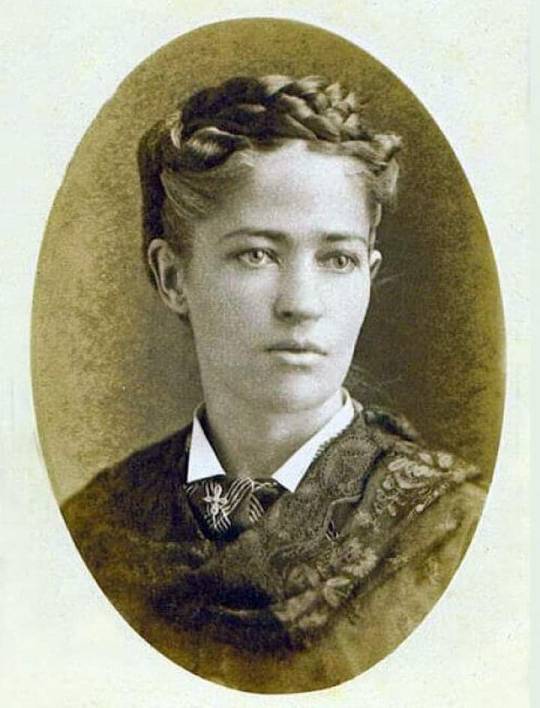
Cochran wanted a machine that would save time washing dishes, and would prevent broken crockery. She was convinced that there had to be a mechanical solution to the tedium of dishwashing. Josephine grew up in a family of engineers, but finding no one that could or would invent such a machine, she vowed, “If nobody else is going to invent a dishwashing machine, I’ll do it myself.”
So she invented a contraption of gears, belts, and pulleys that could take a cage filled with over 200 dirty dishes, and would re-appear a few minutes later with the dishes as clean as if they had been hand-washed. Her machine, unlike others that had been attempted, was the first to use water pressure rather than scrubbers to clean the dishes. It also had fitted racks to hold the dishes and cutlery in place.
Once her patent application, under the name of “J.G. Cochran” was approved, the next challenge was production. “I couldn’t get men to do the things I wanted in my way until they had tried and failed in their own,” Josephine later explained. “And that was costly for me. They knew I knew nothing, academically, about mechanics, and they insisted on having their own way with my invention until they convinced themselves my way was the better, no matter how I had arrived at it.”
In 1886, with the aid of a young mechanic named George Butters, she set to work in a woodshed behind her home bringing the first prototype to life.
Once she had the patent and a machine, she had to sell the dishwashers. Although she wanted to sell directly to women, as they would appreciate how much drudgery the machine eliminated, because very few households in the 19th century could afford to pay over $100 for an appliance, her main customers were large hotels and restaurants.
She was successful at sales, but it was very difficult to challenge the mores of the 19th century, to enter these establishments on her own. When discussing selling to a large hotel, she described it as “almost the hardest thing I ever did, I think, crossing the great lobby of the Sherman House alone. You cannot imagine what it was like in those days…for a woman to cross a hotel lobby alone. I had never been anywhere without my husband or father—the lobby seemed a mile wide. I thought I should faint at every step, but I didn’t—and I got an $800 order as my reward.”
In 1893, she exhibited her dishwashers at the Columbian Exhibition World’s Fair in Chicago, and the orders came pouring in from schools, colleges, hospitals and other large institutions. Her product, the Garis-Cochran Dishwasher was a success.
With the assistance of her business partner, George Butters, they opened a factory in 1898, Cochran’s Crescent Washing Machine Company. At first the dishwashing machines were used primarily by large businesses and institutions, but decades later, Cochran’s invention eventually evolved into the appliance considered essential by millions of householders today.
Cochran died of a stroke in 1913, a very successful businesswoman. Her company was bought out in 1926 by the Hobart Corporation which produced appliances under the KitchenAid brand. In 1986, KitchenAid was acquired by Whirlpool.
Josephine Garis Cochran was inducted into the National Inventors Hall of Fame in 2006. In 2013, on the 100 year anniversary of her death, the country of Romania (a country with which Cochran had no connection) issued a postage stamp in her honor, an indication of just how widespread her influence was.
(Text by Claire Gostling for The Dinosaur on Your Windowsill)
#women in STEM#history#19th century#victorian#engineering#interesting#no fucking terfs clowning on this post please
26 notes
·
View notes
Photo

Josephine Garis Cochran (sometimes spelled Cochrane) (1839-1913) is largely unknown now, but she should be declared the patron saint of the modern busy family. For in 1886, she patented the first commercial dishwasher.
Cochran wanted a machine that would save time washing dishes, and would prevent broken crockery. She was convinced that there had to be a mechanical solution to the tedium of dishwashing. Josephine grew up in a family of engineers, but finding no one that could or would invent such a machine, she vowed, “If nobody else is going to invent a dishwashing machine, I’ll do it myself.”
So she invented a contraption of gears, belts, and pulleys that could take a cage filled with over 200 dirty dishes, and would re-appear a few minutes later with the dishes as clean as if they had been hand-washed. Her machine, unlike others that had been attempted, was the first to use water pressure rather than scrubbers to clean the dishes. It also had fitted racks to hold the dishes and cutlery in place.
Once her patent application, under the name of “J.G. Cochran” was approved, the next challenge was production. “I couldn’t get men to do the things I wanted in my way until they had tried and failed in their own,” Josephine later explained. “And that was costly for me. They knew I knew nothing, academically, about mechanics, and they insisted on having their own way with my invention until they convinced themselves my way was the better, no matter how I had arrived at it.”
In 1886, with the aid of a young mechanic named George Butters, she set to work in a woodshed behind her home bringing the first prototype to life.
Once she had the patent and a machine, she had to sell the dishwashers. Although she wanted to sell directly to women, as they would appreciate how much drudgery the machine eliminated, because very few households in the 19th century could afford to pay over $100 for an appliance, her main customers were large hotels and restaurants.
She was successful at sales, but it was very difficult to challenge the mores of the 19th century, to enter these establishments on her own. When discussing selling to a large hotel, she described it as “almost the hardest thing I ever did, I think, crossing the great lobby of the Sherman House alone. You cannot imagine what it was like in those days…for a woman to cross a hotel lobby alone. I had never been anywhere without my husband or father—the lobby seemed a mile wide. I thought I should faint at every step, but I didn’t—and I got an $800 order as my reward.”
In 1893, she exhibited her dishwashers at the Columbian Exhibition World’s Fair in Chicago, and the orders came pouring in from schools, colleges, hospitals and other large institutions. Her product, the Garis-Cochran Dishwasher was a success.
With the assistance of her business partner, George Butters, they opened a factory in 1898, Cochran’s Crescent Washing Machine Company. At first the dishwashing machines were used primarily by large businesses and institutions, but decades later, Cochran’s invention eventually evolved into the appliance considered essential by millions of householders today.
Cochran died of a stroke in 1913, a very successful businesswoman. Her company was bought out in 1926 by the Hobart Corporation which produced appliances under the KitchenAid brand. In 1986, KitchenAid was acquired by Whirlpool.
Josephine Garis Cochran was inducted into the National Inventors Hall of Fame in 2006. In 2013, on the 100 year anniversary of her death, the country of Romania (a country with which Cochran had no connection) issued a postage stamp in her honor, an indication of just how widespread her influence was.
16 notes
·
View notes
Text
Fay Wray - The First Scream Queen


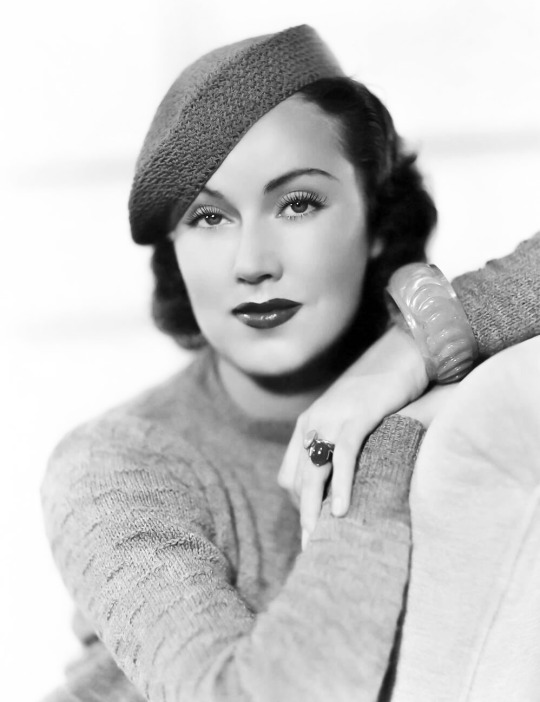
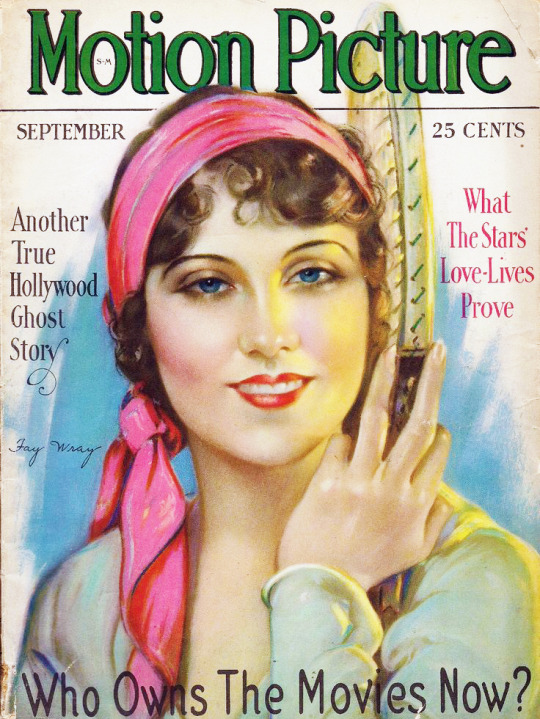
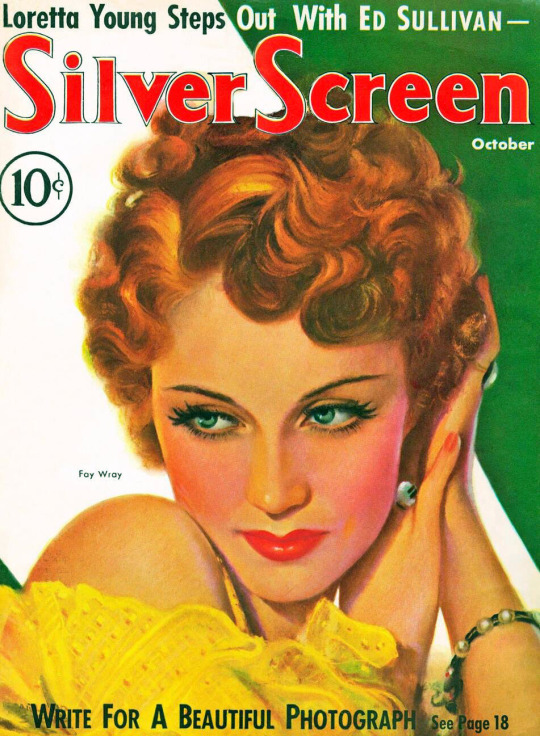
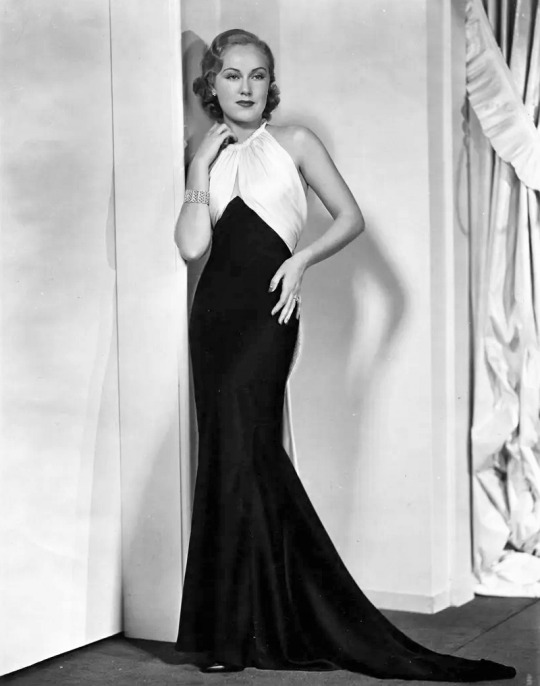



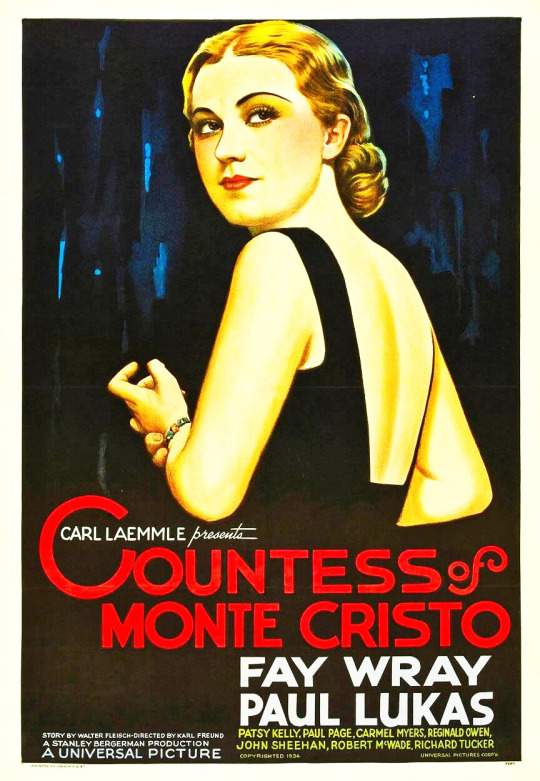

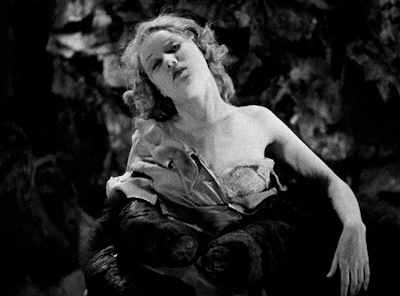
Vina Fay Wray (born in Cardston, Alberta, on September 15, 1907 – August 8, 2004) was a Canadian-American actress who attained international recognition for her roles in in horror films. Because of this, she has been dubbed as "The First Scream Queen".
After returning to the US, the Wray family relocated to Hollywood, where Wray attended Hollywood High School. In 1923, she appeared in her first film at the age of 16, when she landed a role in a short historical film sponsored by a local newspaper.
After appearing in more minor film roles, Wray gained media attention after being selected as one of the "WAMPAS Baby Stars" in 1926. This led to her being contracted to Paramount Pictures as a teenager, where she made more than a dozen feature films.
After leaving Paramount, she signed deals with various film companies. Under these deals, Wray was cast in several horror films, but her best known films were produced under her deal with RKO Radio Pictures, including The Most Dangerous Game (1932) King Kong (1933).
Wray died in her sleep of natural causes at 96 years of age in her apartment in Manhattan. Two days after her death, the lights of the Empire State Building were dimmed for 15 minutes in her memory.
Legacy:
Named an honorary princess and given the name "Little Beaver," by the Kainai Nation in 1967
Became the namesake of a park and a fountain in Cardston, Alberta, her birthplace, during the town's jubilee in 1967
Presented with the Special Award at the Saturn Awards by the Academy of Science Fiction, Fantasy & Horror Films in 1975
Published an autobiography, On the Other Hand: A Life Story, in 1989
Awarded the Women in Film Crystal Award in 1989
Was the Guest of Honor in 1991, at the 60th birthday of the Empire State Building
Honored with a Legend in Film award at the 2003 Palm Beach International Film Festival
Received a star on Canada's Walk of Fame in 2005
Became one of the first four entertainers to be commemorated by Canada Post by being featured on a postage stamp in 2006
Has a star on the Hollywood Walk of Fame for her contributions in motion pictures at 6349 Hollywood Blvd
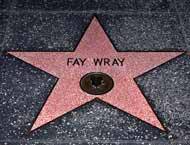
#Fay Wray#Ann Darrow#King Kong#Scream Queen#Scream Queens#The First Scream Queen#The Original Scream Queen#Silent Films#Silent Movies#Silent Era#Silent Film Stars#Golden Age of Hollywood#Classic Hollywood#Film Classics#Classic Films#Old Hollywood#Vintage Hollywood#Hollywood#Movie Star#Hollywood Walk of Fame#Walk of Fame#Movie Legends#Actress#hollywood actresses#hollywood icons#hollywood legend#movie stars#1900s
1 note
·
View note
Text
Events 4.7 (after 1940)
1940 – Booker T. Washington becomes the first African American to be depicted on a United States postage stamp.
1943 – The Holocaust in Ukraine: In Terebovlia, Germans order 1,100 Jews to undress and march through the city to the nearby village of Plebanivka, where they are shot and buried in ditches.
1943 – Ioannis Rallis becomes collaborationist Prime Minister of Greece during the Axis Occupation.
1943 – The National Football League makes helmets mandatory.
1945 – World War II: The Imperial Japanese Navy battleship Yamato, one of the two largest ever constructed, is sunk by United States Navy aircraft during Operation Ten-Go.
1946 – The Soviet Union annexes East Prussia as the Kaliningrad Oblast of the Russian Soviet Federative Socialist Republic.
1948 – The World Health Organization is established by the United Nations.
1954 – United States President Dwight D. Eisenhower gives his "domino theory" speech during a news conference.
1955 – Winston Churchill resigns as Prime Minister of the United Kingdom amid indications of failing health.
1956 – Francoist Spain agrees to surrender its protectorate in Morocco.
1964 – IBM announces the System/360.
1965 – Representatives of the National Congress of American Indians testify before members of the US Senate in Washington, D.C. against the termination of the Colville tribe.
1968 – Two-time Formula One British World Champion Jim Clark dies in an accident during a Formula Two race in Hockenheim.
1969 – The Internet's symbolic birth date: Publication of RFC 1.
1971 – Vietnam War: President Richard Nixon announces his decision to quicken the pace of Vietnamization.
1972 – Vietnam War: Communist forces overrun the South Vietnamese town of Loc Ninh.
1978 – Development of the neutron bomb is canceled by President Jimmy Carter.
1980 – During the Iran hostage crisis, the United States severs relations with Iran.
1982 – Iranian Foreign Affairs Minister Sadegh Ghotbzadeh is arrested.
1983 – During STS-6, astronauts Story Musgrave and Don Peterson perform the first Space Shuttle spacewalk.
1988 – Soviet Defense Minister Dmitry Yazov orders the Soviet withdrawal from Afghanistan.
1989 – Soviet submarine Komsomolets sinks in the Barents Sea off the coast of Norway, killing 42 sailors.
1990 – A fire breaks out on the passenger ferry Scandinavian Star, killing 159 people.
1990 – John Poindexter is convicted for his role in the Iran–Contra affair. In 1991 the convictions are reversed on appeal.
1994 – Rwandan genocide: Massacres of Tutsis begin in Kigali, Rwanda, and soldiers kill the civilian Prime Minister Agathe Uwilingiyimana.
1994 – Auburn Calloway attempts to destroy Federal Express Flight 705 in order to allow his family to benefit from his life insurance policy.
1995 – First Chechen War: Russian paramilitary troops begin a massacre of civilians in Samashki, Chechnya.
2001 – NASA launches the 2001 Mars Odyssey orbiter.
2003 – Iraq War: U.S. troops capture Baghdad; Saddam Hussein's Ba'athist regime falls two days later.
2011 – The Israel Defense Forces use their Iron Dome missile system to successfully intercept a BM-21 Grad launched from Gaza, marking the first short-range missile intercept ever.
2017 – U.S. President Donald Trump orders the 2017 Shayrat missile strike against Syria in retaliation for the Khan Shaykhun chemical attack.
2018 – Former Brazilian president, Luiz Inácio Lula da Silva, is arrested for corruption by determination of Judge Sérgio Moro, from the "Car-Wash Operation". Lula stayed imprisoned for 580 days, after being released by the Brazilian Supreme Court.
2018 – Syria launches the Douma chemical attack during the Eastern Ghouta offensive of the Syrian Civil War.
2020 – COVID-19 pandemic: China ends its lockdown in Wuhan.
2022 – Ketanji Brown Jackson is confirmed for the Supreme Court of the United States, becoming the first black female justice.
0 notes
Text
Rocky Mountain Coin Inc
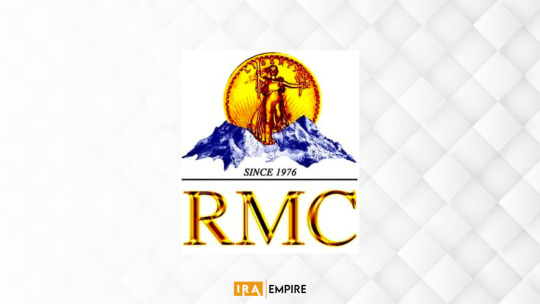
What is Rocky Mountain Coin Inc?
Rocky Mountain Coin Inc is a rare coin, money, and precious metals trader located in the centre of Denver, Colorado. Rocky Mountain Coin Inc, founded in 1976, has grown to become one of the country's largest dealers. Managing annual transactions involving millions of dollars in coins, banknotes, and precious metals.
In addition to coins, Rocky Mountain Coin also buys and sells gold jewellery, pre-owned Rolex watches, and various other valuables. RMC is also a leading reseller of Garrett and Minelab metal detectors in Colorado.

Rocky Mountain Coin Inc has always operated under the tenets of fairness and integrity. Proudly upholding a reputation for great service, knowledge, and unrivalled professional standards.
Rocky Mountain Coin Inc is the destination for investment in retirement saving options. Whether you are a collector of rare coins or uncommon currencies or investing in physical assets.
The company trades every day at the most affordable pricing. Perhaps you would like to sell and transform into cash a collection of antique rare coins, money, or bullion. You might choose to invest in precious metals or start a collection of rarer coins.
Rocky Mountain Coin Inc will provide you with a great bargain and a wide variety of bullion goods to pick from. In the state of Colorado, Rocky Mountain Coin Inc is the biggest of its kind. Their business moves goods often, so there is always something new in our stores. Ro
The American Numismatic Association (ANA), Numismatic Guaranty Corporation (NGC), Professional Coin Grading Service (PCGS), and Industry Council for Tangible Assets (ICTA) are among the other professional numismatic associations that Rocky Mountain Coin Inc belongs to. Additionally, the Better Business Bureau has given Rocky Mountain Coin an A+ rating.
For detailed information Read Rocky Mountain Coin Reviews.
Rocky Mountain Coin Inc- Coins
Rocky Mountain Coin Inc actively buys and sells these things every day and has thousands of rare and valuable U.S. And international coins that date from antiquity to the present era in RMC inventory.

The company welcomes people’s calls whenever they have questions. Regardless of where people are in Colorado, the United States, or the rest of the world. Rocky Mountain Coin Inc experienced professional numismatists are happy to help people in all honesty and integrity and without pressure.
Rocky Mountain Coin Inc- Currency
From the Ming Dynasty to the present, Rocky Mountain Coin Inc stocks hundreds of rare and collectible pieces of American and international paper money.

Economic factors during the American Civil War caused a shortage of gold and silver coins. Which were therefore hoarded for their bullion worth rather than their face value. The U.S. Treasury developed fractional currency to fend against currency speculation (and to provide a way of giving out little change). The 3, 5, 10, 15, 25, and 50 notes were initially given as postal currency to be exchanged for postage stamps between 1862 and 1876.
National Bank Notes
National banks chartered by the US government issued banknotes denominated in US dollars known as National Bank Notes. The bonds that the bank placed with the US Treasury often served as the notes' security. In addition, banks had to have a redemption reserve in gold or "lawful money" equal to 5% of any outstanding note balance. Although not generally accepted as legal cash, the notes were enough for almost all payments to and by the federal government.
The United States government discontinued the use of National Bank Notes as a form of currency in the 1930s, when silver certificates, Federal Reserve Notes, and United States Notes replaced them.
Gold Certificates
Instead of storing the actual gold, gold owners hold a gold certificate as proof of ownership. It has historical significance as American paper money (1863–1933) as well as contemporary significance as a means of investing in gold.
For gold that is allotted (non-fungible) or unallocated (fungible or pooled), banks may issue gold certificates. In the case of a run on the gold on deposit at the issuing bank, unallocated gold certificates, a type of fractional-reserve banking, do not ensure an equal exchange for metal. Although it might be challenging to tell whether a bank is inappropriately allocating a single bar to many parties, allocated gold certificates should be associated with particular numbered bars.
Silver certificates
Silver certificates are a sort of representational currency that was circulated in the United States between 1878 and 1964. They were created in response to public outrage over the Fourth Coinage Act, which effectively put the US on the gold standard, and in response to public demand for silver.
The certificates could be redeemed for their face value in silver dollar coins at first, and then (for a year, from June 24, 1967, to June 24, 1968) they could be redeemed for pure silver bullion. Although they are no longer acknowledged as legal tender because they can only be redeemed for Federal Reserve Notes after 1968, they are still valid legal tender at face value.
Large-size silver certificates
Large-size silver certificates (1878 to 1923) were issued initially in denominations from $10 to $1,000 (in 1878 and 1880) and in 1886 the $1, $2, and $5 were authorized. In 1928, all United States bank notes were re-designed, and the size reduced. The small-size silver certificate (1928–1964) was only regularly issued in denominations of $1, $5, and $10. The complete set is part of the National Numismatic Collection at the Smithsonian’s National Museum of American History.
Federal Reserve Bank Notes
Banknotes that were printed between 1915 and 1934 that are still accepted as legal tender in the US include United States Notes, Silver Certificates, Gold Certificates, National Bank Notes, and Federal Reserve Notes. They were outlined in the Federal Reserve Act of 1913 and were equal in value to other notes of a like denomination. In contrast to Federal Reserve Notes, Federal Reserve Bank Notes are backed by just one of the twelve Federal Reserve Banks, as opposed to all of them combined.
Transparency is Important
National Bank Notes were intended to be replaced with Federal Reserve Bank Notes, but this did not turn out to be the case. They were issued by Federal Reserve banks as opposed to National Banks but were backed similarly to National Bank Notes by U.S. bonds. Federal Reserve Bank Notes are no longer printed; since 1971, only Federal Reserve Notes have been in circulation in the United States.
Large Size Federal Reserve Bank
First released in 1915 in denominations of $5, $10, and $20, large-size Federal Reserve Bank Notes shared design cues with both the Federal Reserve Notes and the National Bank Notes of the time. In 1918, additional $1, $2, and $50 bills were printed as a temporary replacement for Silver Certificates, which the Pittman Act had temporarily banned from use.
Small Size Federal Reserve Bank Notes
In 1933, small-size Federal Reserve Bank Notes were manufactured on the same paper stock as 1929 National Bank Notes as a temporary emergency issue. They were printed in amounts ranging from $5 to $100. A National Bank Note features a line for the president of the national bank to sign, but as Federal Reserve Banks had governors rather than presidents, this line was printed as a bar on the lesser size Federal Reserve Bank Note.
After the sentence "Secured by United States bonds deposited with the Treasurer of the United States of America," the words "Or by like deposit of other securities" were added.
The public's hoarding of currency as a result of numerous bank failures that were taking place at the time led to this emergency note issue. The National Banks' capacity to produce their own notes was likewise constrained by this.
Federal Reserve Bank Notes in small size stopped being printed in 1934 and haven't been available in banks since 1945. They contain brown seals and serial numbers, just like the vintage National Bank Notes, which are modest size notes. Although they have the same wording "National Currency" at the top of the obverse and a very similar appearance, the bills were issued by different entities and are thought to be of entirely different kinds.
Federal Reserve Notes
The United States dollar is now printed on Federal Reserve Notes, often known as United States banknotes. The Federal Reserve Act of 1913 authorizes the United States Bureau of Engraving and Printing to print the notes. And at the Board of Governors of the Federal Reserve System's discretion, to issue them to the Federal Reserve Banks. The notes are subsequently distributed by the Reserve Banks to their member banks. At which time they are converted into Reserve Bank liabilities and US debt.
The words "this note is legal tender for all debts, public and private" are printed on each Federal Reserve Note, making them valid forms of payment. They took the place of National Bank Notes, which national banks issued between 1863 and 1935. With permission from the US Treasury. The Federal Reserve Banks guarantee financial assets as collateral for the notes. Mostly Treasury securities and mortgage agency securities, which they buy on the open market with fiat money.
United States Notes
From 1862 through 1971, the United States issued United States Notes, sometimes referred to as Legal Tender Notes. They were released for a longer period of time than any other type of U.S. paper money, lasting 109 years. The name "greenbacks" came from the older greenbacks, the Demand Notes, which they succeeded in 1862. They are frequently referred to as Legal Tender Notes. Although the First Legal Tender Act, which approved them as a form of fiat money, was renamed the United States Notes. In the 1860s, the notes' alleged second duty read as follows on the back:
This Note is payable in repayment of all loans made to the United States and is a legal tender for all debts, public and privat. With the exception of duties on imports and interest on the public debt.
When compared to contemporary American currency, United States Notes issued in the large-size format prior to 1929 look very different. But those issued in the small-size format beginning in 1929 look very similar to modern Federal Reserve Notes of the same denominations, with the exception of having red U.S. Treasury Seals and serial numbers in place of green ones.
The United States still recognizes existing United States Notes as legal tender; however, since no new United States Notes have been created since January 1971. They are become harder to find in circulation and are worth more as numismatic collectibles than their face value.
Bullion
If you're thinking about investing in silver or gold, visit Rocky Mountain Coin in Denver, Colorado, and Greenwood Village. We have been buying and selling gold, silver, and platinum coins and bars since 1976. Because we are one of the largest precious metals merchants in the country, you can expect affordable rates.

Rocky Mountain Coin Inc stocks thousands of bullion items because RMC is Colorado's largest precious metals exchange. If you're a Denver resident, From Littleton, Englewood, Arvada, Aurora, Centennial, or any other metropolis. You can reach RMC’s Denver or Greenwood Village store in about 30 minutes by car.
>>>Get in touch with the #1 rated gold IRA company of 2023
Read the full article
0 notes
Text
Taxes, Tea And Why We Celebrate American Independence Day On July 4
Bright burning sparklers against American flag, closeup
getty
My son came downstairs this morning to wish me very happy on George Washington's birthday. He knows, of course, that's not today—Washington was born on February 22, and we celebrate on the third Monday of February—but the joke was still funny. Many people don't know why we celebrate on July 4, only that it has something to do with our break from Great Britain. Officially a federal holiday, July 4, 1776, marks the day that the Continental Congress formally adopted the Declaration of Independence.
Declaration of Independence
The Declaration of Independence is exactly what it sounds like—an announcement that the United States of America was declaring independence from King George III and Great Britain. There are six copies still in existence, including the original rough draft with edits—you can see it up close in the Jefferson Papers at the National Library of Congress.
Interestingly, while Thomas Jefferson referred to the "thirteen united States of America" in the Declaration, the words "United Colonies" had generally been used as a descriptor before that time, including by Congress when it appointed Washington as Commander in Chief in June 1775.
LEXINGTON, MA - APRIL 17: Re-enactors of the Battle of Lexington dressed as British soldiers fire ... [+] their weapons as they battle with the Lexington militia April 17, 2006 in Lexington, Massachusetts. The Battle of Lexington, which took place in 1775, was the first skirmish of the Revolutionary War. (Photo by Joe Raedle/Getty Images)
Getty Images
The printing of the declaration came more than a year (442 days) after shots were first fired at Lexington, Massachusetts in 1775, considered the beginning of the American Revolutionary War. And the Declaration of Independence did not mark the end of the Revolutionary War. It was quite the opposite—it signaled that the United States no longer wished to accept British rule.
MORE FOR YOU
Background
The British had ruled the colonies since the early 17th century when the Virginia Company became the Virginia Colony in 1624, the first of the original thirteen British colonies. The United States wasn't the only part of the world—or even the only part of the Americas—subject to British colonization. The British had also exerted control over parts of Canada, the Caribbean, and South America.
But ruling the world gets expensive. Guarding colonies and occasionally invading new lands takes money. And not everyone agrees as to who owns which lands, so fighting occasionally breaks out. That's precisely what happened in the mid-18th century when Great Britain was battling several countries, primarily France, in the Seven Years' War. When the war ended in 1763, Great Britain could declare a win against France. Still, the years of fighting had come at a significant cost, as the British government was nearly bankrupt.
King George III needed to raise revenue and quickly. What better way than a series of taxes and tariffs? And who better to tax than subjects who were far enough away, like the American colonists, to stifle the complaining? There was just one problem with this plan: The King underestimated exactly how loudly the colonists would react.
Stamp Act
The first significant post-war tax imposed on the colonists was the Stamp Act of 1765. Stamps, as they apply to taxes, don't have anything to do with postage. Rather, stamps are an official confirmation of compliance with a certain rule or requirement. In this case, materials printed and used in the colonies, like magazines and newspapers, were required to be produced on stamped paper and embossed with a revenue stamp, showing that tax had been paid. Colonists, of course, didn't like the tax, and many refused to pay. Some tax collectors even quit their jobs rather than collect. As a result, the Stamp Act was repealed the following year.
Declaratory Act
It wasn't a good look for Britain—the colonists had asserted their authority and won. In response, Parliament immediately passed the Declaratory Act stating that it had the right to pass laws in the colonies "in all cases whatsoever."
Townshend Acts
Shortly afterward, there were additional attempts to raise revenue in the colonies through a series of acts called the Townshend Acts of 1767. The Townshend Acts were a little bit different than the Stamp Act since they were indirect taxes on imports. Since the colonists didn't directly bear the costs, King George III assumed they would be less offensive to the colonists. He was wrong.
The colonists weren't happy—a tax was a tax. They were spurred on by Philadelphia lawyer John Dickinson, who wrote a series of essays called "Letters from a Farmer in Pennsylvania," arguing against taxation without representation. In the letters, he asked, "[W]hat signifies the repeal of the Stamp Act, if these colonies are to lose their other privileges, by not tamely surrendering that of taxation?" He later questioned whether the British had the right to impose any tax to raise revenue without consulting with the colonists, writing, "I answer, with a total denial of the power of parliament to lay upon these colonies any "tax" whatever."
Tea Act
The Townshend Acts were partially repealed in 1770. The partially repealed bit is important. In 1773, Parliament passed the Tea Act. It was the last straw for many colonists, even though it wasn't a new tax—it kept the tax on imported tea that wasn't repealed under the Townshend Act. But it did something more: it gave the East India Tea Company a trade advantage, cutting out the ability of the colonists to do business on their terms. Tax or not, the colonists viewed the Tea Act as another way they were being controlled.
The colonists figured that the best way to stand up to the Tea Act was to turn away ships carrying tea headed for the colonies. The colonists were able to do so in Philadelphia and New York but not in Boston. The Governor of Massachusetts wouldn't allow the ships to be turned back, and the colonists would not let the ships unload in the harbor. It was a stand-off. To end it, colonists snuck onto the ships and dumped out the tea—the event that you and I call the Boston Tea Party.
The Boston Tea Party did not immediately lead to the Declaration of Independence or the Revolutionary War, even though we like to link them as though they happened in quick succession. The Tea Party occurred on December 16, 1773, long before the shots at Lexington and the Declaration of Independence. What the Boston Tea Party did do quickly, however, was annoy Parliament. In response, the British attempted to punish the Americans through a series of laws called the Coercive Acts. Under the Coercive Acts, among other things, Boston Harbor was closed to merchant shipping, town meetings were banned, and the British commander of North American forces was appointed the governor of Massachusetts.
United States. American Revolution (1765-1783). First Continental Congress. September 22, 1774. ... [+] Philadelphia. Manifest to request the merchants of the federal colonies, not to send to Great Britain any goods, for the preservation of the liberties of America. From the Minutes. Secretary Charles Thomson. Printed by W. and T. Bradford. (Photo by: PHAS/Universal Images Group via Getty Images)
Universal Images Group via Getty Images
The colonists had enough. They convened the First Continental Congress in Philadelphia on September 5, 1774, to consider their next steps. Resistance against the British increased, leading to those first shots in Massachusetts triggering the Revolutionary War.
Drafting Of The Declaration
The Second Continental Congress convened in Philadelphia two years later. On July 2, 1776, the Second Continental Congress voted to separate from Great Britain. Two days later, on July 4, 12 of the 13 colonies formally adopted the Declaration of Independence—the one holdout, New York, approved it on July 9.
On July 19, the document got a new title, "the unanimous declaration of the thirteen united states of America," and a new look after being "engrossed" on parchment. It was intended to be signed by every member of Congress, but a few opted out, including Dickinson, who hoped the colonies could reconcile with Britain.
Grievances
The Declaration of Independence was drafted as a letter to the King. The most extensive section of the Declaration—after the lines we memorized in elementary school—is a list of grievances. Of course, taxes were included, notably "...[f]or imposing Taxes on us without our Consent."
'Signing the Declaration of Independence, 28th June 1776' - painting by John Trumbull, commissioned ... [+] 1817. (Photo by Culture Club/Getty Images)
Getty Images
The word "Consent" was important. Under the British Constitution, British subjects could not be taxed without the consent of their representatives in Parliament. The colonies didn't elect representatives to Parliament, but they were being taxed. The colonists considered the constant imposition of taxes without a vote unconstitutional, just as Dickinson had written years earlier. It was famously "taxation without representation."
Response
Initially, the British response was to chide the "misguided Americans" and "their extravagant and inadmissable Claim of Independency." But the declaration was more than just a document—it had set the United States down the road to independence.
In 1783, with the signing of the Treaty of Paris, the United States formally became an independent nation. But the date that we most associate with our independence is when those in the Continental Congress were brave enough to officially declare it to the world—July 4, 1776.
Happy Independence Day!
Read more here https://yg1.z1.web.core.windows.net/TaxWise/freelancer-taxes/Optimizing-Tax-Efficiency-Strategies-for-US-Expats-Living-in-Singapore.html
0 notes
Text
Taxes, Tea And Why We Celebrate American Independence Day On July 4
Bright burning sparklers against American flag, closeup
getty
My son came downstairs this morning to wish me very happy on George Washington's birthday. He knows, of course, that's not today—Washington was born on February 22, and we celebrate on the third Monday of February—but the joke was still funny. Many people don't know why we celebrate on July 4, only that it has something to do with our break from Great Britain. Officially a federal holiday, July 4, 1776, marks the day that the Continental Congress formally adopted the Declaration of Independence.
Declaration of Independence
The Declaration of Independence is exactly what it sounds like—an announcement that the United States of America was declaring independence from King George III and Great Britain. There are six copies still in existence, including the original rough draft with edits—you can see it up close in the Jefferson Papers at the National Library of Congress.
Interestingly, while Thomas Jefferson referred to the "thirteen united States of America" in the Declaration, the words "United Colonies" had generally been used as a descriptor before that time, including by Congress when it appointed Washington as Commander in Chief in June 1775.
LEXINGTON, MA - APRIL 17: Re-enactors of the Battle of Lexington dressed as British soldiers fire ... [+] their weapons as they battle with the Lexington militia April 17, 2006 in Lexington, Massachusetts. The Battle of Lexington, which took place in 1775, was the first skirmish of the Revolutionary War. (Photo by Joe Raedle/Getty Images)
Getty Images
The printing of the declaration came more than a year (442 days) after shots were first fired at Lexington, Massachusetts in 1775, considered the beginning of the American Revolutionary War. And the Declaration of Independence did not mark the end of the Revolutionary War. It was quite the opposite—it signaled that the United States no longer wished to accept British rule.
MORE FOR YOU
Background
The British had ruled the colonies since the early 17th century when the Virginia Company became the Virginia Colony in 1624, the first of the original thirteen British colonies. The United States wasn't the only part of the world—or even the only part of the Americas—subject to British colonization. The British had also exerted control over parts of Canada, the Caribbean, and South America.
But ruling the world gets expensive. Guarding colonies and occasionally invading new lands takes money. And not everyone agrees as to who owns which lands, so fighting occasionally breaks out. That's precisely what happened in the mid-18th century when Great Britain was battling several countries, primarily France, in the Seven Years' War. When the war ended in 1763, Great Britain could declare a win against France. Still, the years of fighting had come at a significant cost, as the British government was nearly bankrupt.
King George III needed to raise revenue and quickly. What better way than a series of taxes and tariffs? And who better to tax than subjects who were far enough away, like the American colonists, to stifle the complaining? There was just one problem with this plan: The King underestimated exactly how loudly the colonists would react.
Stamp Act
The first significant post-war tax imposed on the colonists was the Stamp Act of 1765. Stamps, as they apply to taxes, don't have anything to do with postage. Rather, stamps are an official confirmation of compliance with a certain rule or requirement. In this case, materials printed and used in the colonies, like magazines and newspapers, were required to be produced on stamped paper and embossed with a revenue stamp, showing that tax had been paid. Colonists, of course, didn't like the tax, and many refused to pay. Some tax collectors even quit their jobs rather than collect. As a result, the Stamp Act was repealed the following year.
Declaratory Act
It wasn't a good look for Britain—the colonists had asserted their authority and won. In response, Parliament immediately passed the Declaratory Act stating that it had the right to pass laws in the colonies "in all cases whatsoever."
Townshend Acts
Shortly afterward, there were additional attempts to raise revenue in the colonies through a series of acts called the Townshend Acts of 1767. The Townshend Acts were a little bit different than the Stamp Act since they were indirect taxes on imports. Since the colonists didn't directly bear the costs, King George III assumed they would be less offensive to the colonists. He was wrong.
The colonists weren't happy—a tax was a tax. They were spurred on by Philadelphia lawyer John Dickinson, who wrote a series of essays called "Letters from a Farmer in Pennsylvania," arguing against taxation without representation. In the letters, he asked, "[W]hat signifies the repeal of the Stamp Act, if these colonies are to lose their other privileges, by not tamely surrendering that of taxation?" He later questioned whether the British had the right to impose any tax to raise revenue without consulting with the colonists, writing, "I answer, with a total denial of the power of parliament to lay upon these colonies any "tax" whatever."
Tea Act
The Townshend Acts were partially repealed in 1770. The partially repealed bit is important. In 1773, Parliament passed the Tea Act. It was the last straw for many colonists, even though it wasn't a new tax—it kept the tax on imported tea that wasn't repealed under the Townshend Act. But it did something more: it gave the East India Tea Company a trade advantage, cutting out the ability of the colonists to do business on their terms. Tax or not, the colonists viewed the Tea Act as another way they were being controlled.
The colonists figured that the best way to stand up to the Tea Act was to turn away ships carrying tea headed for the colonies. The colonists were able to do so in Philadelphia and New York but not in Boston. The Governor of Massachusetts wouldn't allow the ships to be turned back, and the colonists would not let the ships unload in the harbor. It was a stand-off. To end it, colonists snuck onto the ships and dumped out the tea—the event that you and I call the Boston Tea Party.
The Boston Tea Party did not immediately lead to the Declaration of Independence or the Revolutionary War, even though we like to link them as though they happened in quick succession. The Tea Party occurred on December 16, 1773, long before the shots at Lexington and the Declaration of Independence. What the Boston Tea Party did do quickly, however, was annoy Parliament. In response, the British attempted to punish the Americans through a series of laws called the Coercive Acts. Under the Coercive Acts, among other things, Boston Harbor was closed to merchant shipping, town meetings were banned, and the British commander of North American forces was appointed the governor of Massachusetts.
United States. American Revolution (1765-1783). First Continental Congress. September 22, 1774. ... [+] Philadelphia. Manifest to request the merchants of the federal colonies, not to send to Great Britain any goods, for the preservation of the liberties of America. From the Minutes. Secretary Charles Thomson. Printed by W. and T. Bradford. (Photo by: PHAS/Universal Images Group via Getty Images)
Universal Images Group via Getty Images
The colonists had enough. They convened the First Continental Congress in Philadelphia on September 5, 1774, to consider their next steps. Resistance against the British increased, leading to those first shots in Massachusetts triggering the Revolutionary War.
Drafting Of The Declaration
The Second Continental Congress convened in Philadelphia two years later. On July 2, 1776, the Second Continental Congress voted to separate from Great Britain. Two days later, on July 4, 12 of the 13 colonies formally adopted the Declaration of Independence—the one holdout, New York, approved it on July 9.
On July 19, the document got a new title, "the unanimous declaration of the thirteen united states of America," and a new look after being "engrossed" on parchment. It was intended to be signed by every member of Congress, but a few opted out, including Dickinson, who hoped the colonies could reconcile with Britain.
Grievances
The Declaration of Independence was drafted as a letter to the King. The most extensive section of the Declaration—after the lines we memorized in elementary school—is a list of grievances. Of course, taxes were included, notably "...[f]or imposing Taxes on us without our Consent."
'Signing the Declaration of Independence, 28th June 1776' - painting by John Trumbull, commissioned ... [+] 1817. (Photo by Culture Club/Getty Images)
Getty Images
The word "Consent" was important. Under the British Constitution, British subjects could not be taxed without the consent of their representatives in Parliament. The colonies didn't elect representatives to Parliament, but they were being taxed. The colonists considered the constant imposition of taxes without a vote unconstitutional, just as Dickinson had written years earlier. It was famously "taxation without representation."
Response
Initially, the British response was to chide the "misguided Americans" and "their extravagant and inadmissable Claim of Independency." But the declaration was more than just a document—it had set the United States down the road to independence.
In 1783, with the signing of the Treaty of Paris, the United States formally became an independent nation. But the date that we most associate with our independence is when those in the Continental Congress were brave enough to officially declare it to the world—July 4, 1776.
Happy Independence Day!
Read more here https://yg1.z1.web.core.windows.net/TaxWise/freelancer-taxes/Optimizing-Tax-Efficiency-Strategies-for-US-Expats-Living-in-Singapore.html
0 notes